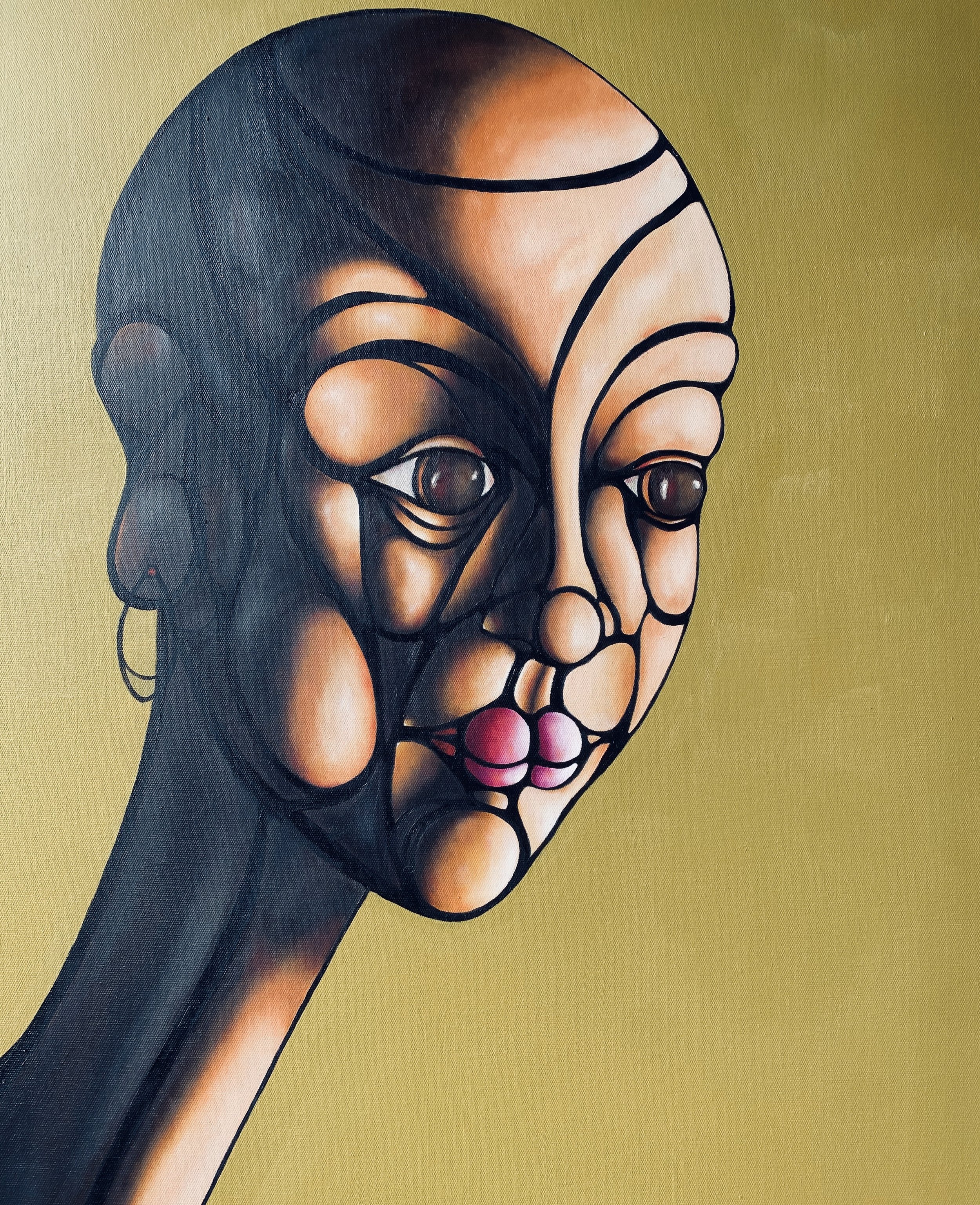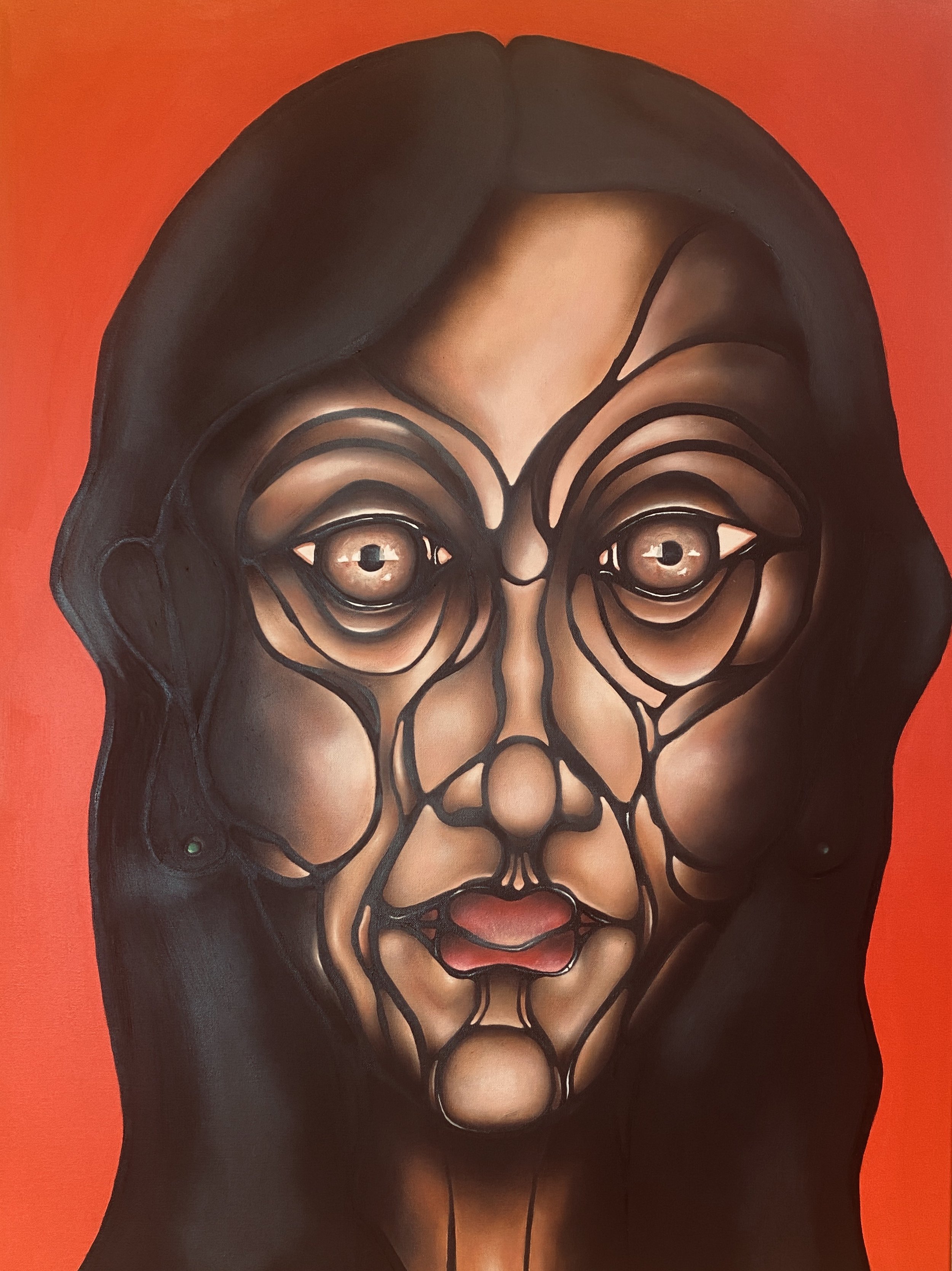Interview
Vincent Bolletta
Vincent has always had a penchant for playing creatively on the fringes of his life, using sketching, sculpting, photography, and painting to self-soothe and find fulfillment. This series is, in some respects, the story of his life, assimilating and digesting what those experiences mean.
He combines principles of yoga, Taoism, and mindfulness into his creative practice. Exploring human behavior and the many facets that make up how we experience ourselves, Vincent nudges the viewer to see our evolution, history, bias, and narratives of who we think we are as interdependent layers—using structural lines to connect and manage all the moving parts into a cohesive experience.
What is the most powerful element of your artistic inspiration?
“The process of creating artwork excites me. It is a journey led by intuition, imaginings, readings, and stories that articulate life experiences, tales of beauty and darkness, and intricate internal struggles. These come out through preferred aesthetics, textures, and colors in a quest for personal fulfillment and self-expression.”



Describe the underlying theme of your work
“There is a structural relationship that brings order to the abstraction. Integrating individual components around this structural framework unifies the image on multiple levels with each added layer. The hope is there is a recognition of one's order and chaos within. There is an element of predetermination to the form based on my bias, habituations, and life stories.”
Take us through your creative process
“It's not something I overanalyze. I do have an idea of the character I am working with and who I want to emerge from, and this is what guides my creative decisions. There is a bit of a formula to it but better informed on a gut level. In real-time, continuous sensing and evaluating allow for serendipity, as you can't control all creative elements. ”
How would you define your artwork?
“My work is bold in shape and color, influenced by some minimalism, but with just enough complexity to draw the viewer in. It is raw and yet refined with representations of the disillusioned, almost to the point of automatons. Somewhere beneath the surface is a sense of manufactured reality, a built person who does not belong. This includes components of the superficial layers of illicit landscapes that present the human form from a naturalistic perspective despite our computations of perceived reality.”


What do you believe to be the role of an artist in society?
“In the words of Tim Wilson, "the role that I have taken upon for myself is to bring an element of joy." This is what I try to do. It is not to say that the works I create are joyful in and of themselves, but art itself should inspire thought and action and the pursuit of one's purpose and skill. Life is ultimately sad but beautiful, and art is an antidote and therapeutic tool.”
Which artists influence you most?
“I've been influenced by several artists throughout my life. The works of the impressionist in my youth captivated me, the dance of light and color brought wonderment. In my adult years, several artist come to mind: works from Mondrian, Banksy, Jean-Michel Basquiat, Tim Wilson (landscape artist), Simon Kaan and Jac Wilson (dancer and choreographer). All these have contributed to telling my side of the story. Through their work, they have taught me that form is unpredictable, and any value that is determined, rests in the eye of the beholder.
I love the era of the classics before art got too conceptual and lofty. I prefer a grounded approach to art with more of a visceral experience on offer.”
Website: www.thelookoftheunimpressed.com
Instagram: @vincentbolletta




